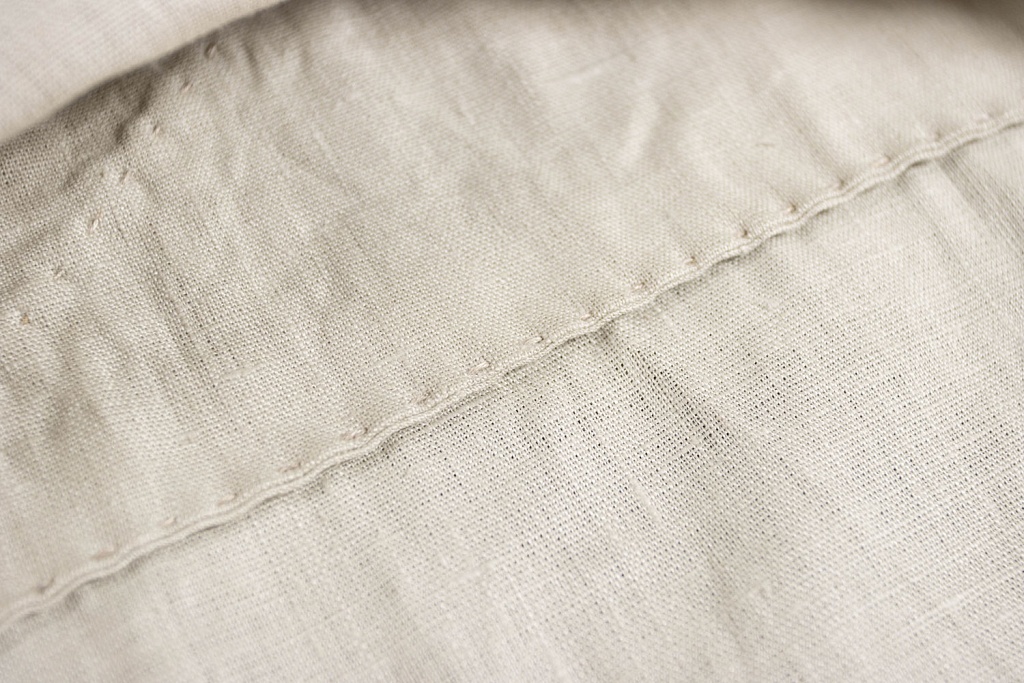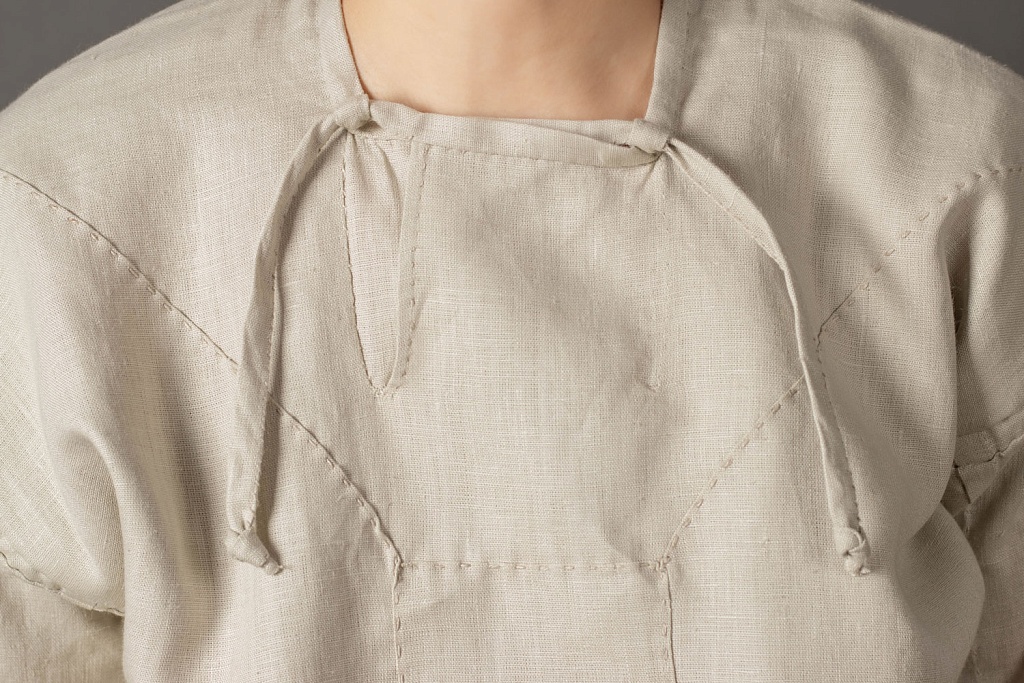Viborg tunic, 11th century
Historical note
All photos of the finished tunic are an example of our work.
The main Viking settlement was located where the Viborg Cathedral now stands. But on the banks of Lake Søndersø there was also a smaller district where craftsmen and their families lived; it was here where the remains of the tunic were found when the Viborg Stiftsmuseum performed archaeological excavations in 1985.

After that the workers of the County Conservation Institute in Skive managed to skillfully unfold the lump of fabric, releasing various large and small patches that, after being put together, turned out to belong mostly to a linen tunic.

From the other archaeological finds from Søndersø we know that Viborg had skilled craftsmen, so it is likely that both the weaving and cutting of the tunic took place here.
Seeds from the flax plant family were also found in the ground, so it is tempting to imagine Viborg in those times being surrounded by blooming blue fields in late summer. However, it was not the seed of flax used for making fabric that was found, but of oil flax, which was grown to extract it fine oil or to bake linseeds in bread, just like today. We have no evidence that flax was grown anywhere near Viborg; it was probably imported from elsewhere, possibly from the Baltic countries.

The tunic consisted of ten parts sewn together with eight different types of seams into a fine garment with long, narrow sleeves, a lined waist, and slits in both sides to make movements easier. A quite narrow fabric edging fringes the square neck opening and is continued as two ties that close the asymmetric slit.
The tunic is a fine piece of handwork. It was sewn from the finest linen, which was woven either on the older version of a high-warp loom or on an early version of a low-warp loom - both looms were in use during this period, at the end of the Viking Age.

The size suggests that the tunic must have belonged to a young man. But what on earth made such a lad put his precious linen tunic into a post hole? The shirt was not worn out from being used. There has been speculation about a kind of sacrifice, of which we know examples not only from the Iron Age, but also from later times, even right up to the present day. From the Middle Ages, we know of rituals including tunics belonging to a woman and a man, so the Viborg tunic may have been part of such a sacrifice.





The material of this article may be supplemented in the future
Make an order for sewing
